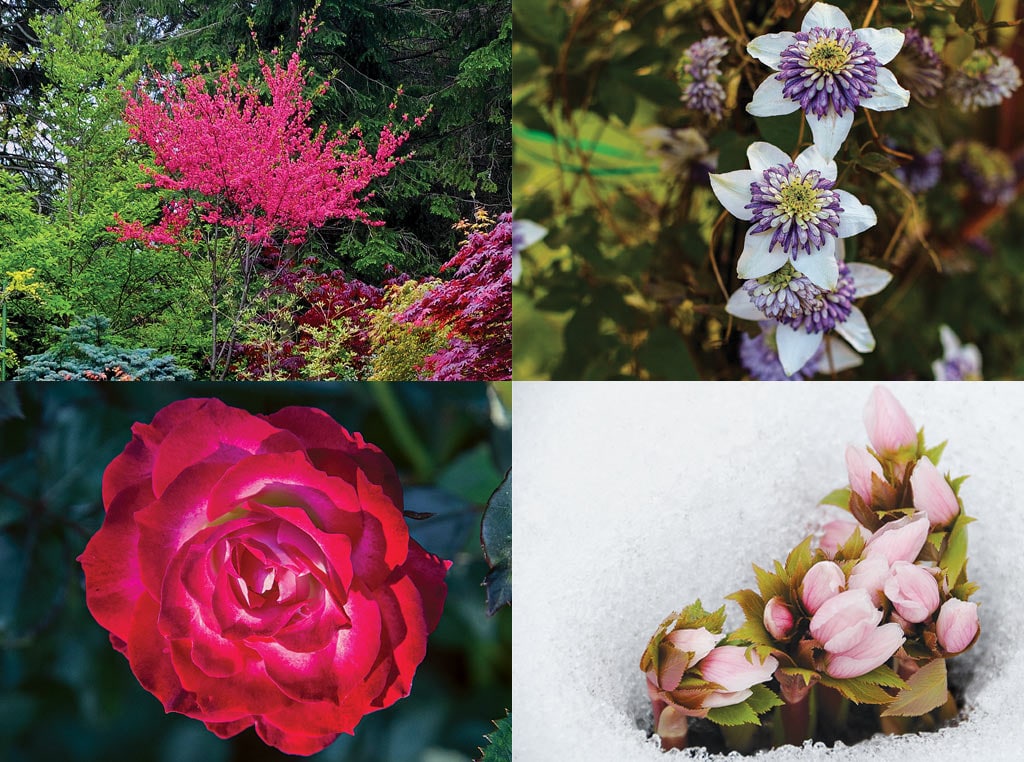
Spring (top left), Summer (top right), Fall (bottom left), and Winter (bottom right)
Rural Living March 01, 2021
Never Ending Colors
Plan ahead to create a visual feast throughout the year.
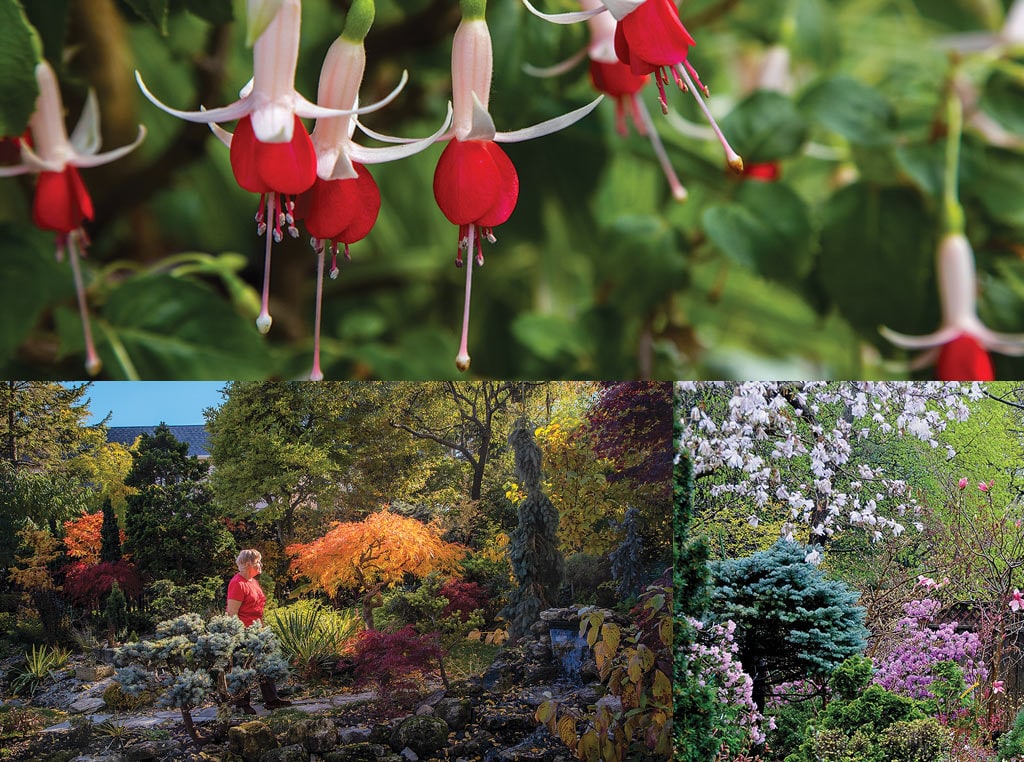
Marion Hardy uses perennial plants to create a base that provides year round color.
Everyone assumes they can have a backyard garden that’s a riot of color through the summer months and they might get another blast of color in the fall. After that gardening is just picking the last tomatoes and raking your leaves before the bleak months of winter set in. There’s nothing to look forward to until the first irises and crocuses poke their heads through the soil in the spring.
Marion Jarvie, a master gardener from Thornhill, Ontario, insists that the gardening season doesn’t have to be that way. With a bit of planning, and careful plant, tree and shrub selection, your garden can be a source of never ending color throughout the entire year.
“Your winter landscape is the test of a true garden,” Jarvie says. “You should be able to look out and see something beautiful all winter long. There is no reason it has to be feast or famine; the seasons do not matter.”
Back in the 1980s most gardeners in northern climes were pretty much limited to a choice between blue spruce and maples for their foundation trees. The problem is these trees will grow to be seventy feet tall. They’re too big if you have less than a two-acre lot. But since then, hundreds of new varieties of hardy dwarf conifers and Japanese Maples have become available. There are all kinds of flowering Eastern North American plants you can choose from too. They come in all kinds of colors and shapes that can create a beauty all their own.
A blank slate. “Having good soil and a good water supply are absolutely essential,” Jarvie says. “If you are starting a new yard in a new subdivision, or even if you’re not, the first step you should always take is to assess your soil. I haven’t seen a property yet where the soil didn’t need to be improved. But in new developments the developer likely removed most of the topsoil and replaced it with sod. You might just need to add 18 inches of good organic topsoil soil.”
The next step is to decide what types of plants you are going to grow, Jarvie says. Do you have full sun or full shade? If you have a lot of trees you might need to limb some, if you don’t have any, you’ll have to plant some. There are ways to cope with just about any challenge Mother Nature throws at you with the right preparation.
Once you are confident the soil is suitable, it’s time to start laying out the basic lines of your garden using a mixture of the many types of flowering trees. Jarvie suggests flowering dogwoods, magnolias and a mixture of dwarf conifers.
“Largely choose small understory trees like some of the 400 different Japanese Maples,” Jarvie says. “They will grow in full sun, but they’re very happy in partial shade. So you can use them almost anywhere in any garden. But make sure they’re planted in well-drained soil and they have sufficient water if they’ll be planted in full sun. Water isn’t as big a problem if you have shade.”
Once you have your trees and shrubs in place to create your basic lines, the next step is to start filling in the finer details. There are many different kinds of rhododendrons and azaleas you can add to decorate your garden.
The use of evergreen shrubs such as rhododendrons, and other similar plants is a twelve-month gift; their bloom in spring is unsurpassable. They can’t stand hot, dry, full sun southern exposure, but if you choose varieties hardy for your climate, they’ll do well anywhere else.
They won’t bloom in full shade. Make sure to plant them in wet, sloppy peat moss.
Where you buy your plants will make quite a difference, Jarvie says. Big box stores might be bringing them in from anywhere. Plants and trees can cost a lot of money, so you really need to make sure you are buying ones suitable for your area. A flowering shrub that does well in Atlanta might not fare nearly as well in Toronto.
Choosing blooms. The next step is to start choosing bulbs that will bloom at different times of the year. Winter aconites (Eranthis Hyemalis), Jarvie’s first bulbs of the new season will come up and start to bloom in late February. They create sheets of yellow color on the south side of the house that last through March. By the time they’re done, then comes what she calls her LBJs (little blue jobs), all kinds of bulbs that come up flowering in all shades of blue. These will be followed by botanical tulips and other bulbs such as Fritillaries and Alliums.
“The large Alliums, lilies and other perennials will then take you right through into autumn when the incredible fall color season takes over,” Jarvie says. This can last into mid-November until the colchicums and fall crocus bring us back to the first snow.
Even snow doesn’t bring the flower season to an end. In January the snowdrops (Galanthus) come in if you have direct southerly exposure. They’ll last for weeks with the cooler weather. Hellebores though are Jarvie’s favorite perennials for the winter through spring. Different types can start blooming in November. Helleborus thibetanus comes up through snow and ice.
One, Helleborus niger, often called the Christmas rose, can appear as early as November and will continue to bloom throughout the winter whenever snow permits. Another popular one is Helleborus x hybridus. It comes in almost every color and will brighten your garden until June. It’s a tough perennial coming from cold mountainous regions.
The overall mix of trees, shrubs, flowering plants and bulbs in Jarvie’s yard creates a sense of wonder. Every time you turn around, any time of the year, there’s something amazing to see. It’s daunting and awe inspiring for a novice gardener to experience. But she reiterates anyone can have a great garden, all it takes is good soil, water, planning and time.
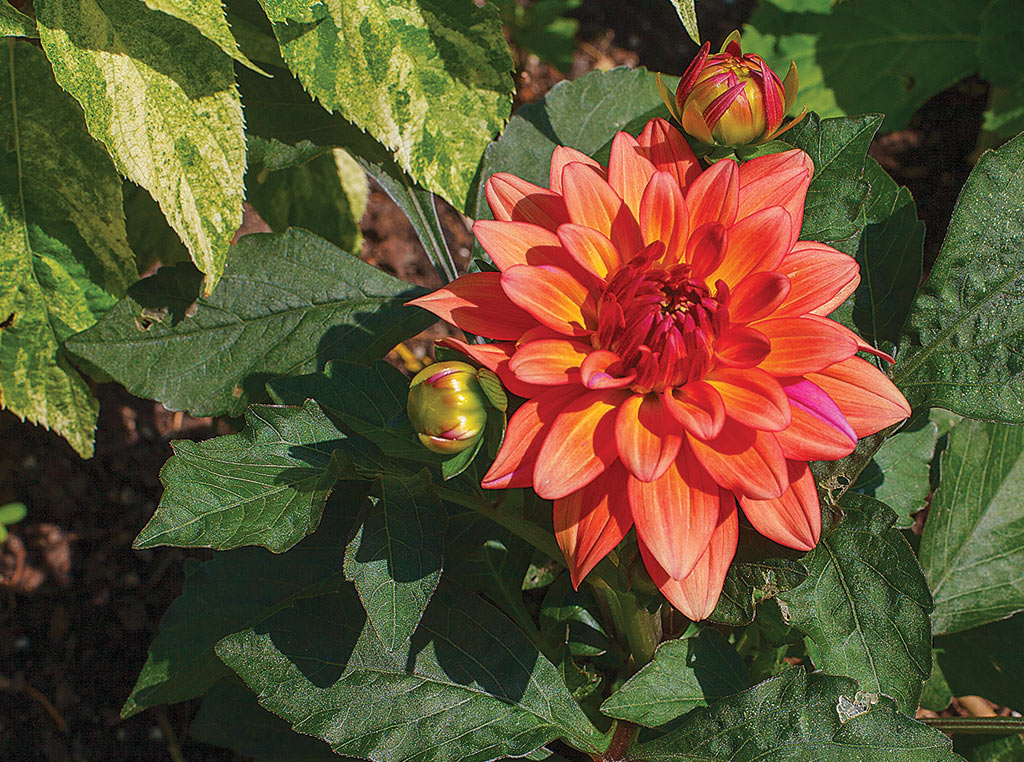
Annuals like the Dahlia ‘Melody Dora’ can be used to provide splashes of color where you want it.
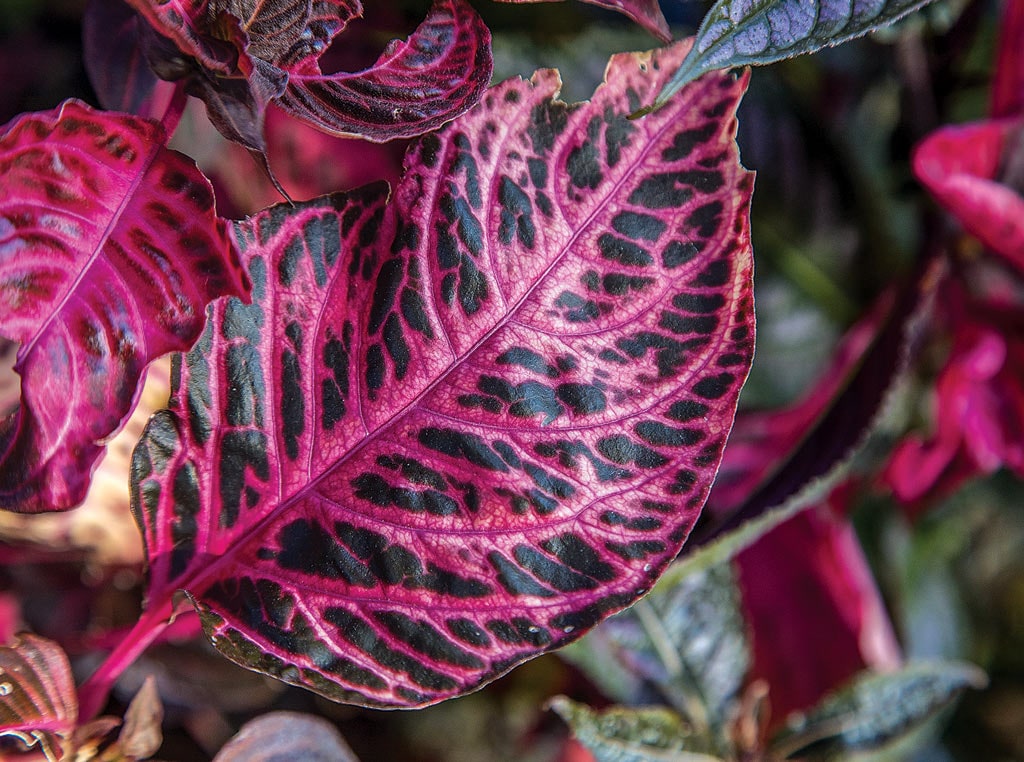
Read More
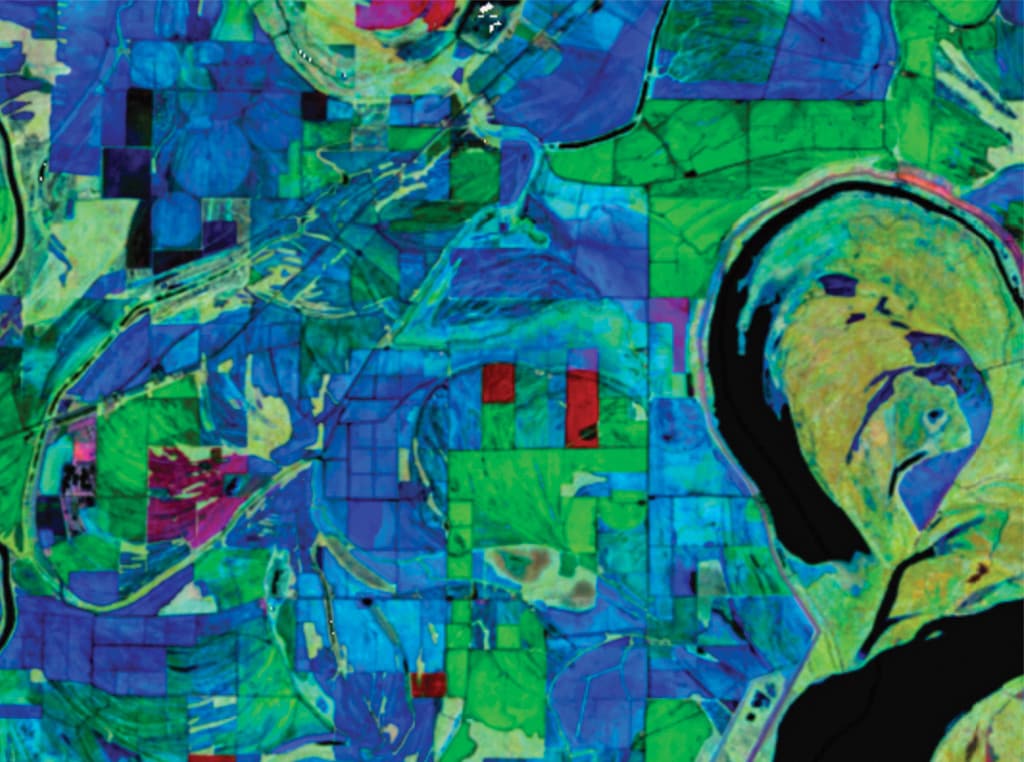
Agriculture, Ag Tech
Ag Data Is Beautiful
Digital sattellite data paints farm masterpieces.
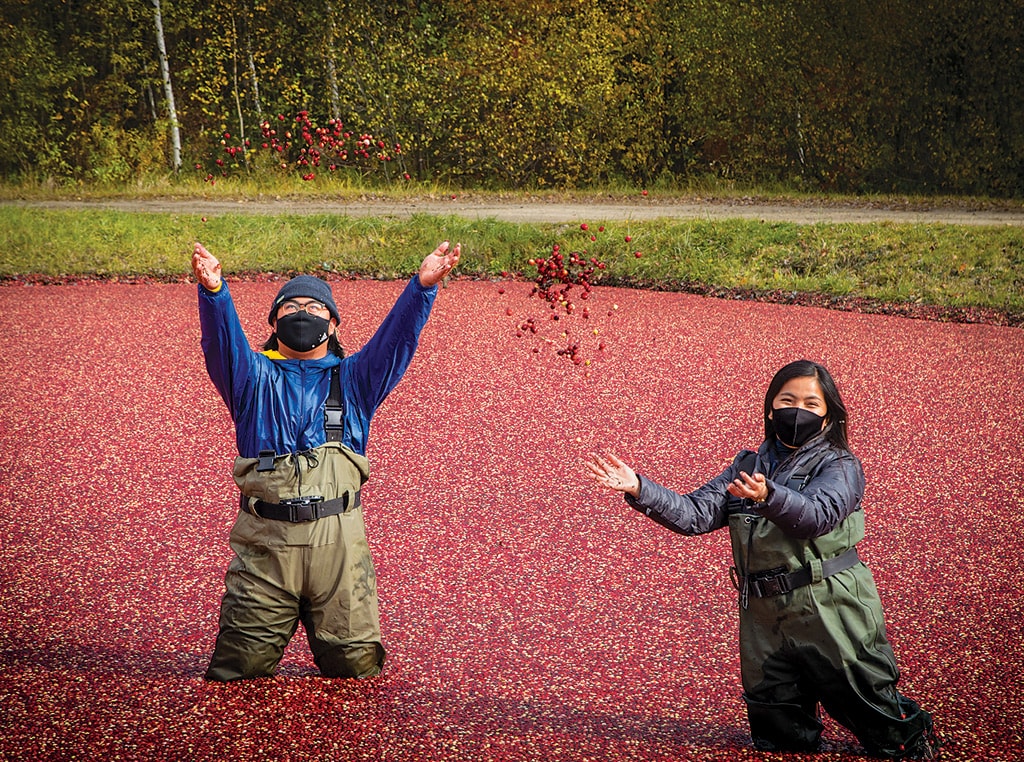
Agriculture, Specialty/Niche
Year-round Tourism
Muskoka farm develops innovative ways to incorporate four-season tourism attractions.
